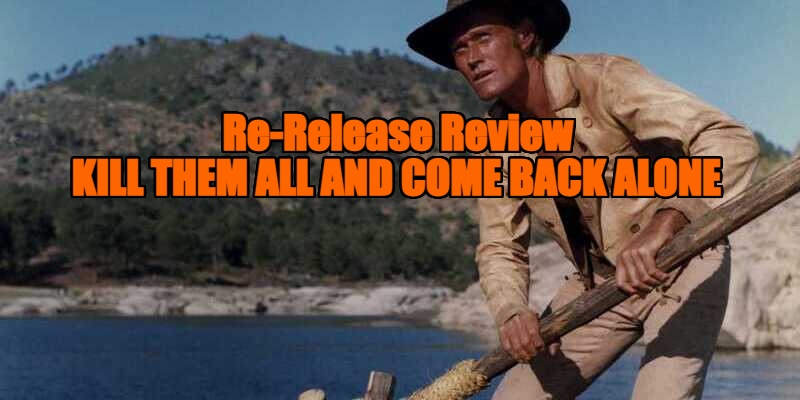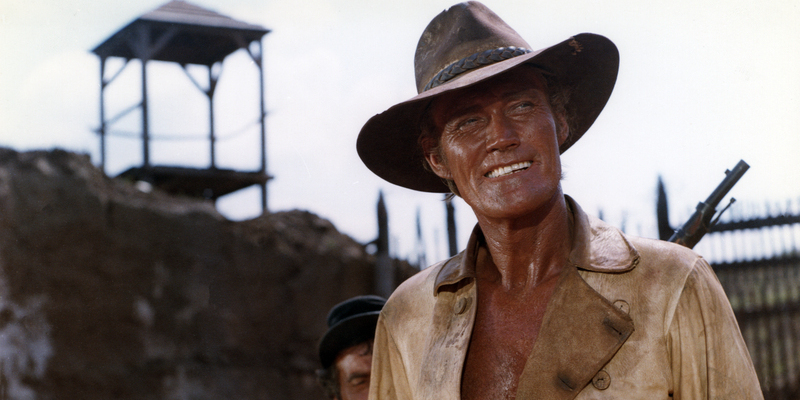
Review by
Eric Hillis
Directed by: Enzo G. Castellari
Starring: Chuck Connors, Frank Wolff, Franco Citti, Leo Anchóriz, Giovanni Cianfriglia, Alberto Dell'Acqua, Hercules Cortez

In the late 1960s spaghetti westerns started to turn towards comedy,
with director Enzo G. Castellari's 1967 film
Any Gun Can Play one of the first spaghettis to initiate
this transition. The following year Castellari swam against the
prevailing tide however with the very straight-faced and wonderfully
titled Kill Them All and Come Back Alone.

That title is a decree issued by a Confederate general to the movie's
rugged anti-hero, Clyde McKay (Chuck Connors). Inspired by the
success of 1967's The Dirty Dozen, Kill Them All sees a band of cutthroats assembled for a
suicide mission, though in this case their likely deaths are expected to
come at the hands of the man in charge of their not so merry band.
McKay gathers five scumbags – Hoagy (Franco Citti), Deker (Leo Anchóriz), Blade (Ken Wood), The Kid (Alberto Dell'Acqua) and
Bogard (Hercules Cortez) – to steal a stash of gold from a
heavily guarded Union encampment. Riding along to keep an eye on things
is Confederate Captain Lynch (Frank Wolff), who rubs McKay the
wrong way, prompting fisticuffs from their first encounter.

As is often the case with Castellari's movies,
Kill Them All is heavily front-loaded, opening with the
movie's highlight set-piece. It's a sequence that would likely inspire
Gianfranco Parolini, as it contains the sort of acrobatics found in his
Sabata trilogy. Like the set-piece that opens
Return of Sabata, it's revealed as a charade, in this case an audition for McKay's men
to prove they can infiltrate a heavily-guarded area. Castellari and
editor Edmondo Lozzi assemble it beautifully, with the action
anchored by Connors' glaring blue eyes as he watches his men take over
the camp in the silent manner of ninjas.
Heavily inspired by Sidney J. Furie's 1966 western
The Appaloosa, Castellari comes up with some novel framing devices here, my
favourite being a lounging McKay forming a v-shape with his boots to
reveal the figure of Lynch looming over him. He keeps things visually
exciting by placing his camera in dynamic positions, with one shot that
frames McKay's pistol POV in the manner of the first-person shooter
video games that would come decades later (it's a shot Matt Reeves later
borrowed for Dawn of the Planet of the Apes, replacing a six-shooter with a tank cannon).

While Castellari is a great action director, I'm not convinced that
he's a great director. His movies really lag in between the shootouts
and car chases, and he struggles to get his actors to make anything out
of the one-dimensional characters his scripts usually lumber them with.
That's the case here, with McKay and his bandits displaying none of the
dimensions of the similar protagonists of films like
The Dirty Dozen and The Magnificent Seven. For a guys on a mission movie to work you have to care about the
guys, but there's nothing interesting about this lot beyond their
costumes and weaponry (Deker's banjo/grenade launcher is a memorable
piece of artillery).

